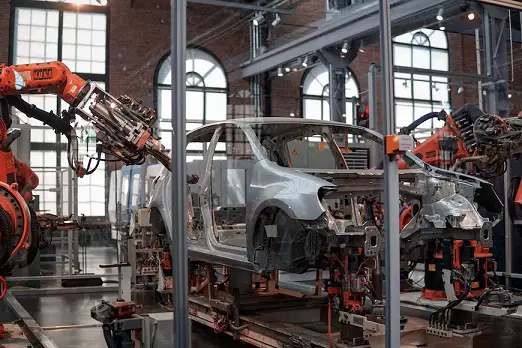Surveys on new orders for products of US manufacturers are conflicted, either showing expansion, or a third straight month of contraction.
The more widely followed survey, the Institute for Supply Management’s U.S. Purchasing Managers Index (PMI), indicated new orders rose. The S&P Global PMI, however, showed new order fell for the third straight month
Both reports showed a weak manufacturing sector that was idling through the second half of 2022. Activity was barely any better than during the pandemic lows of 2020.
The ISM headline reading held steady in August at 52.8, its lowest reading since June of 2020. ISM noted this would still signal expansion in the sector and the US economy. The S&P global PMI for US manufacturing came in at 51.5 for August, just above the earlier “flash” estimate of 51.3, but below the 52.2 it came in at in July. This headline reading was the lowest since July of 2020.
Both indexes were slightly better than had been predicted. Economist forecasts were for the S&P Global to come in at 51.3, and for the ISM reading to come in at 52.0.
The reports also split on employment readings. The ISM survey found that manufacturing employment had stopped contracting and begun to grow. The S&P Global survey saw employment growing, but at the second-slowest rate in more than two years.
The lead economists from each survey espoused different views of the economy based on their data.
S&P’s Chris Williamson said, “US factory production was down for a second month running in August, with demand for goods having now fallen for three straight months amid the ongoing impact of soaring inflation, supply constraints, rising interest rates and growing economic uncertainty about the economic outlook. Barring the initial pandemic lockdowns months, this is the steepest downturn in US manufacturing seen since the global financial crisis in 2009″
Meanwhile, ISM’s Timothy Fiore noted, “The U.S. manufacturing sector continues expanding at rates similar to the prior two months. New order rates returned to expansion levels, supplier deliveries remain at appropriate tension levels and prices softened again, reflecting movement toward supply/demand balance. According to Business Survey Committee respondents’ comments, companies continued to hire at strong rates in August, with few indications of layoffs, hiring freezes or head-count reductions through attrition.”
Both surveys would point to inflationary pressures diminishing. The ISM index dropped 7.5% from its July reading of 60 percent, to hit its lowest reading since June 2020. S&P meanwhile, noted input prices increased at the slowest rate since the beginning of 2021, and sell prices rose the slowest in a year and a half.
Production contracted for the second month in a row due to weak demand according to S&P, which Williamson attributed to the impact of customer uncertainty about the future of the economy and inflation.
Williamson said, “Worryingly, the sharpest drop in demand was recorded for business equipment and machinery, which points to falling investment spending and heightened risk aversion. Similarly, payroll growth slowed close to stalling, reflecting a growing reticence to expand workforce numbers in the face of a deteriorating demand environment. Falling demand for raw materials has, however, taken pressure off supply chains and helped shift some of the pricing power away from sellers towards buyers. Likewise, we are seeing more manufacturers reduce their selling prices to drive sales. Although still elevated by historical standards, the survey’s inflation gauges are now at their lowest for one and a half years, which should help to bring consumer price inflation down in the coming months.”
The surveys do examine slightly different portions of the sector. ISM surveys are weighted more toward larger manufacturers who do more exporting, while the S&P survey focuses more on smaller manufacturers who focus more on domestic demand.

